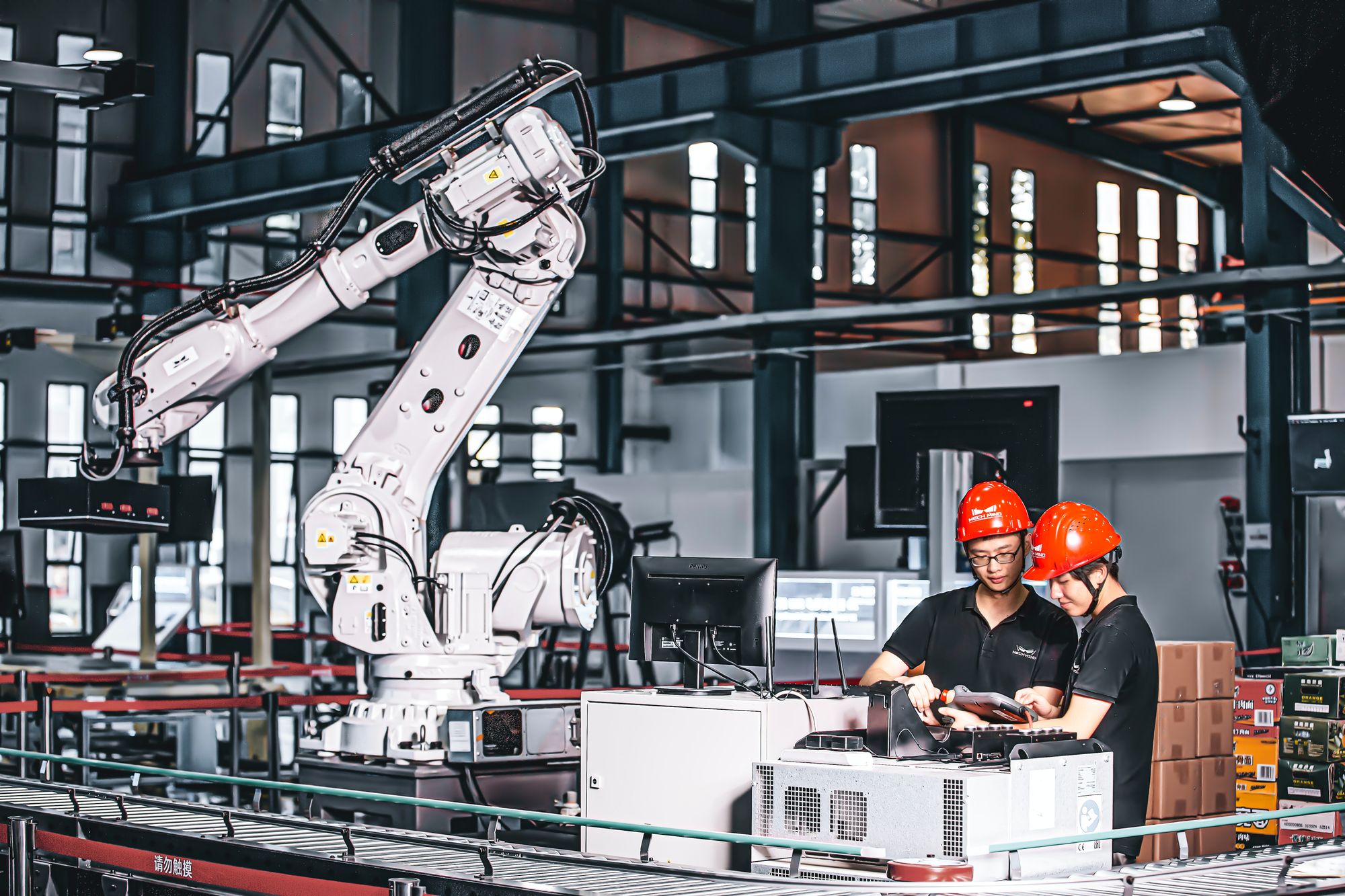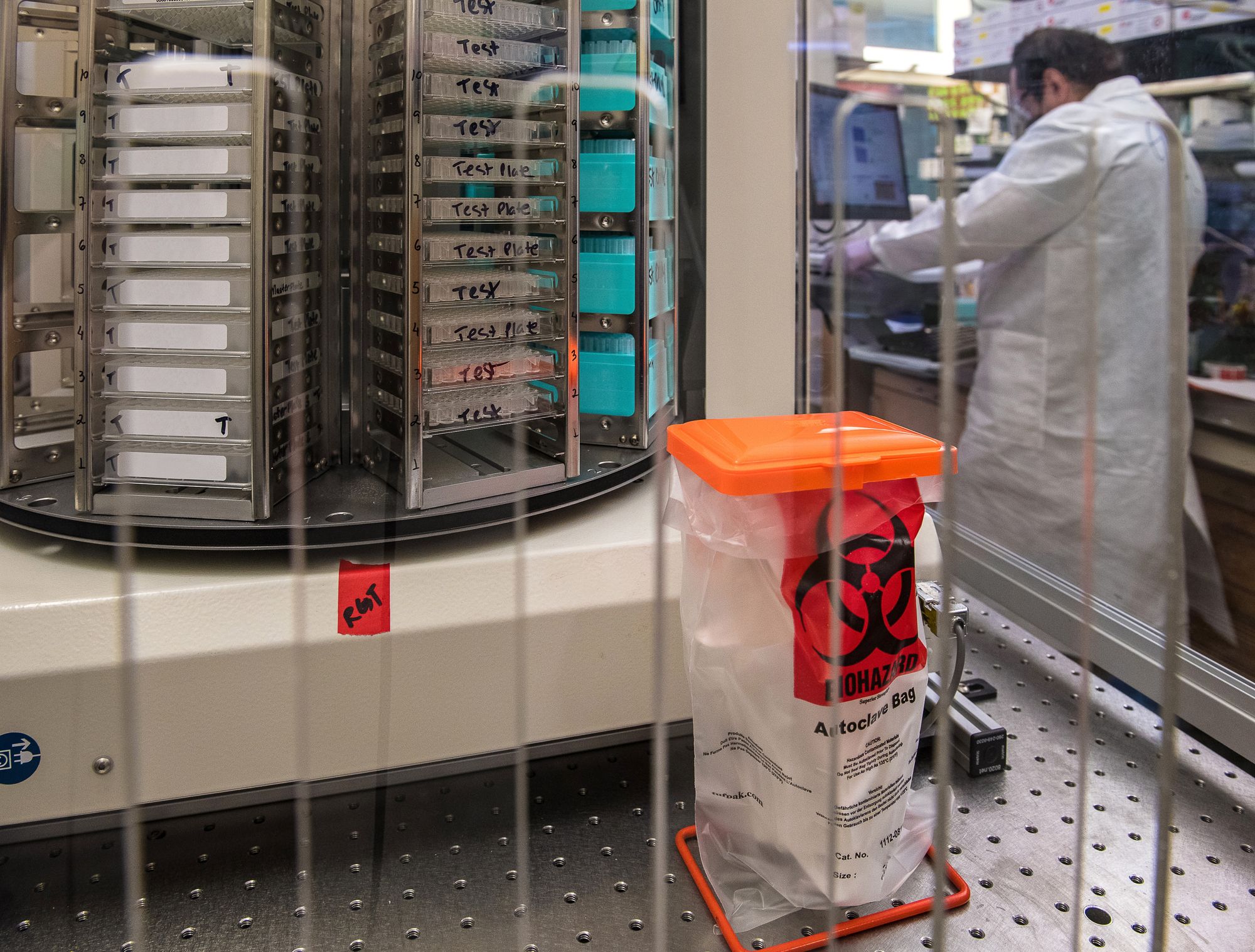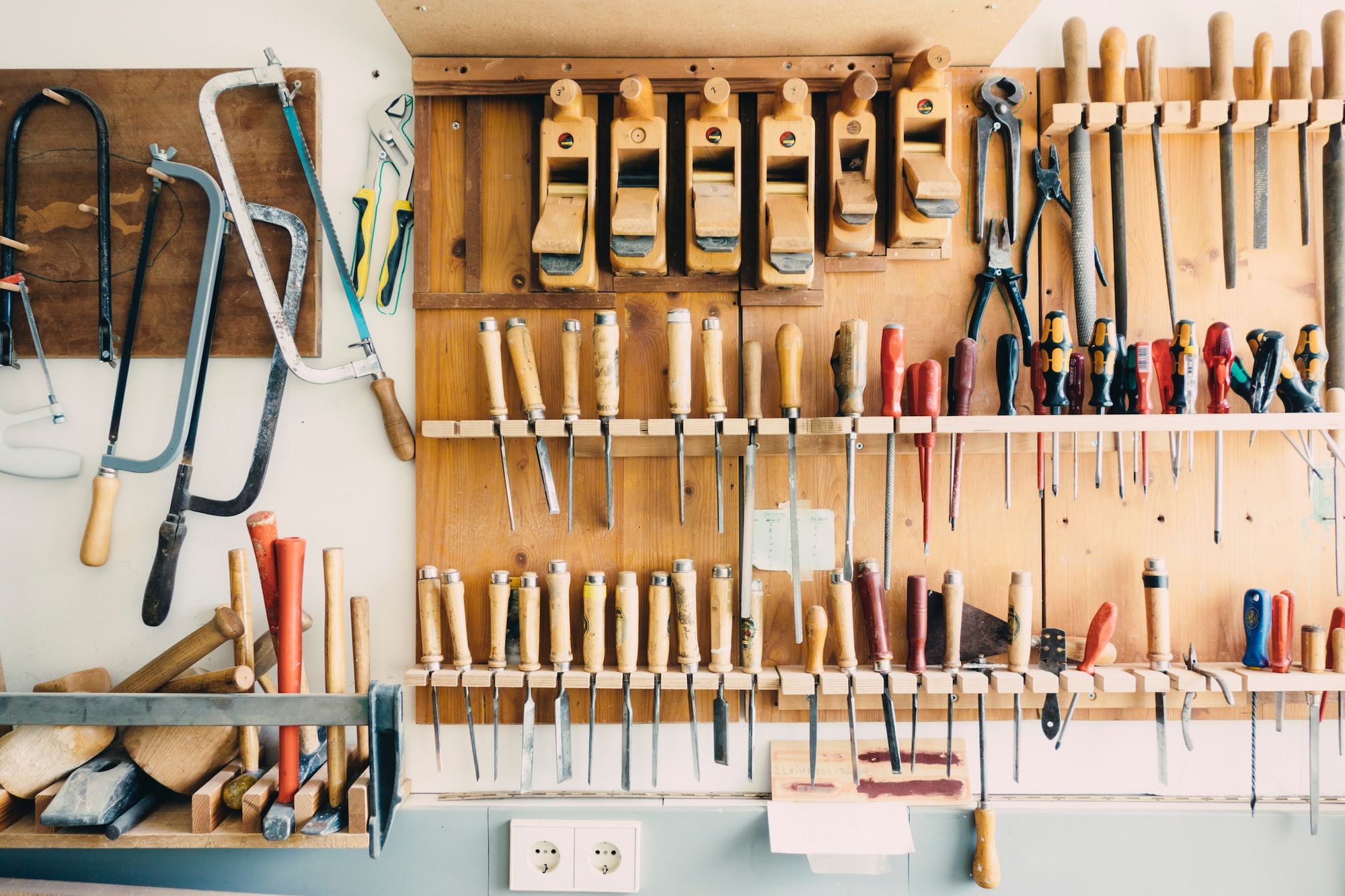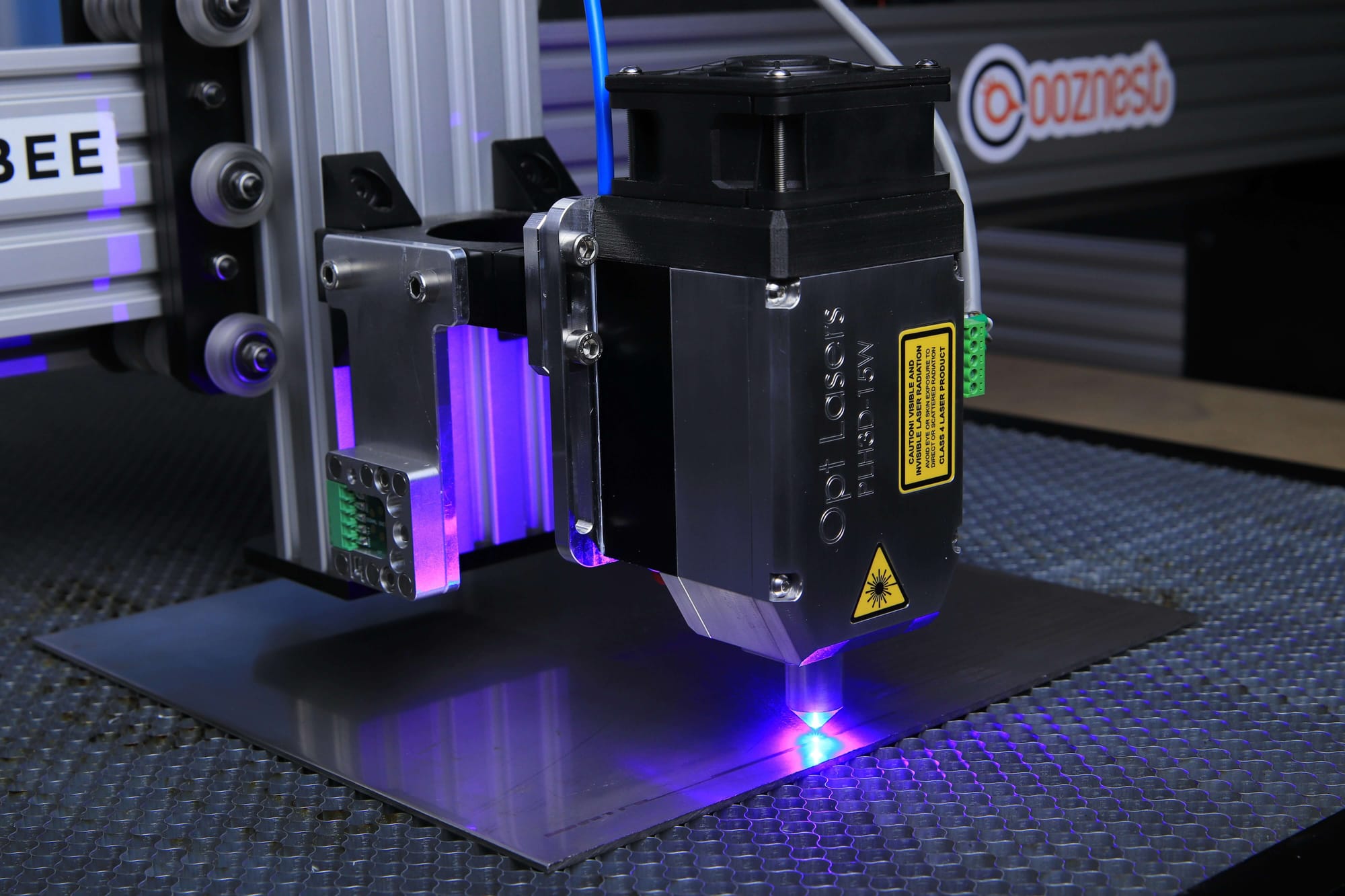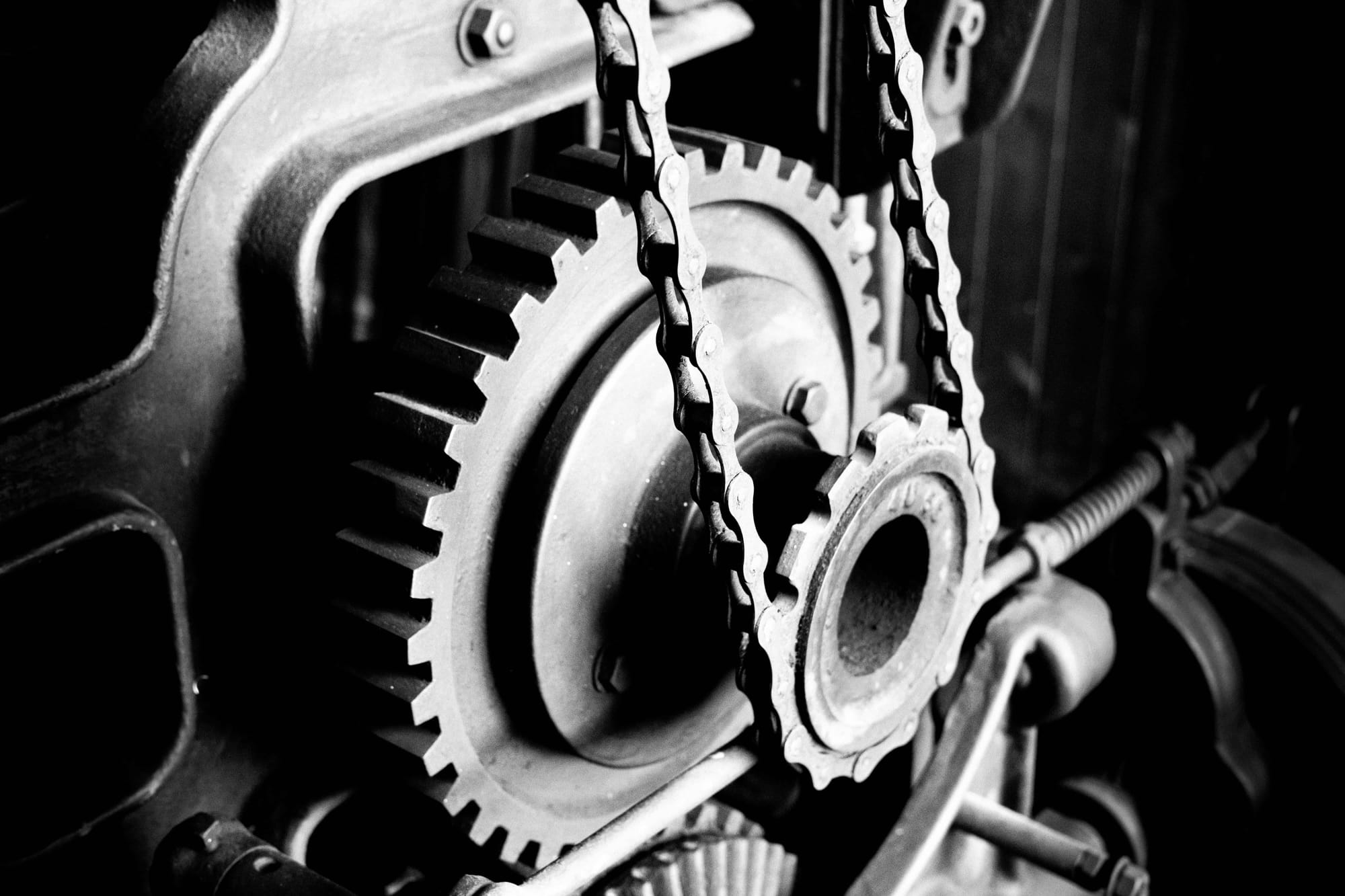A specific type of store or small business known as a "job shop" creates unique products. In job shop manufacturing, small quantities of the products or objects are made.
The company that wants the store to produce its goods asks the shop to make some specialty items. The product is manufactured by special all-purpose equipment in the shop.
In today's guide, we'll delve into extensive detail on job shop manufacturing. Let’s take a look at the table of content:
- What is Manufacturing Process?
- Different Types of Manufacturing Process
- Job Shop Manufacturing Definition
- 5 Characteristics of Job Shop Manufacturing
- Important Features of Job Shop Manufacturing
- Industries that Employ Job Shop Manufacturing
- When is Job Shop Production Used?
- Example of Job Shop Manufacturing
- Advantages of Job Shop Manufacturing
- Disadvantages of Job Shop Manufacturing
- Job Shop Vs. Chop Shop
- How Deskera Can Assist You?
- Final Takeaways
Let's begin!
What is Manufacturing Process?
Manufacturing is the process of turning raw materials into a finished product. People's labor, machines, other tools, and frequently a biological or chemical process are used to accomplish this.
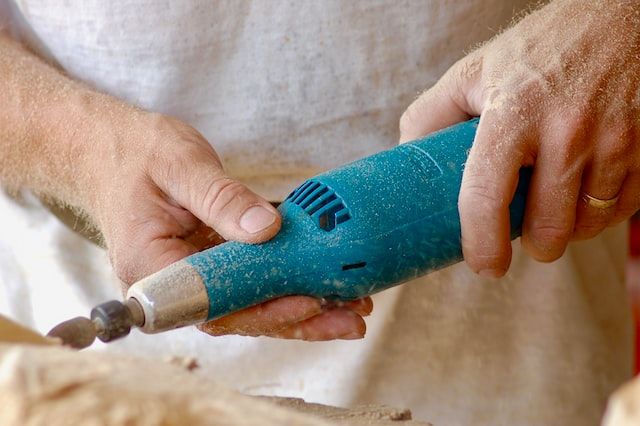
Manufacturing the constituent parts that are integrated to make a range of commodities is a possibility, as is large-scale manufacturing. It includes aircraft, home appliances, automobiles, and more.
Different Types of Manufacturing Process
Following we have discussed 6 main types of production system. Let’s take a look:
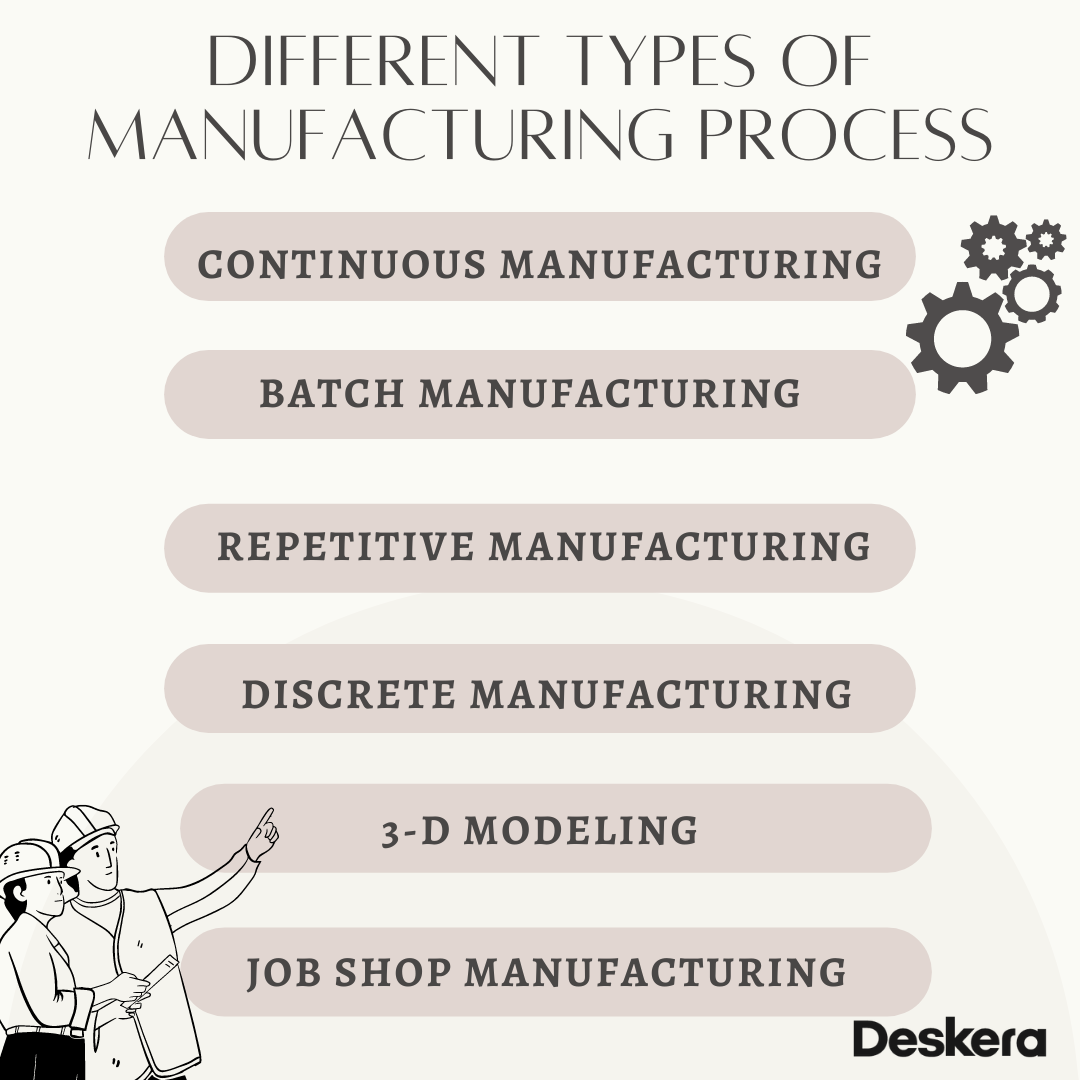
1. Continuous Manufacturing
A method of manufacturing that can generate a constant flow of products.
The completed product is quite uniform.
Materials and goods are produced in endless, continuous flows rather than in discrete batches or units.
Continuous flow technology enables high volume, around-the-clock operation with expensive, specialized automation.
2. Batch Manufacturing
A processing technique suitable for varied commodities and volumes.
For a single batch, the product diversity is fixed and constrained. a bakery or pharmacy, for instance.
A few of the facility's many products get regular and significant demand.
This type of production system should be employed when there are wide types of products in wide volumes.
3. Repetitive Manufacturing
Repetitive manufacturing is appropriate when creating repeating output at a fixed production pace. In this manufacturing method, specialized production lines work nonstop on the same product or component throughout the year.
You can modify operation speeds to satisfy client requests for producing more or less goods because setup and changeover time are so short.
4. Discrete Manufacturing
Discrete manufacturing employs an assembly or production line. It is much more varied than repeated manufacturing, although allowing for more frequent changeover and variation.
A company can offer several product styles, sizes, or customizations with discrete manufacturing. Although doing so frequently lengthens production time due to any additional setup or removal that may be necessary.
5. 3-D Modeling
Many in the industry now recognize 3D printing as the sixth production technique. In order to build three-dimensional objects layer by layer from a digital model, 3D printing, which was developed in the 1980s, substitutes a variety of composites and materials, including plastics and metals, for manual labor or mechanization.
6. Job Shop Manufacturing
Job shops are appropriate for manufacturing small quantities of a wide range of products, each of which has a unique bespoke design and requires a particular set of processing steps or routing through the production process.
A restaurant, a company that makes furniture, or a company that creates prototypes are a few examples.
As stated earlier we’ll cover the last type of production, which is the job shop manufacturing process.
Job Shop Manufacturing Definition
A Job Shop is referred to as a type of manufacturing process that can handle small orders for made-to-order (MTO). Here the products are produced in small batches (of varying quantities) to maximize flexibility.
This often includes products with custom designs & maintenance, small fabrication orders, and repair services.
The operating periods and sequences of products may differ significantly in job shop production. The goods are released one time in batches, often known as "jobs."
Job shop manufacturing processes are distinguished by specific workflows, work centers, job prioritization, and job-related information.
General-purpose machines are extensively employed in job shop factories. It helps to enable the manufacture of a variety of goods in small lot sizes or quantities. This is because they have a wide range of capabilities and can carry out a wide range of activities.
Job shop owners have the option of selling their goods directly to customers, doing business with wholesalers, or producing components for other businesses.
When completing customer orders, businesses that use job shop production frequently use just-in-time (JIT) workflow.
Here's the definition of just-in-time inventory. Take a look:
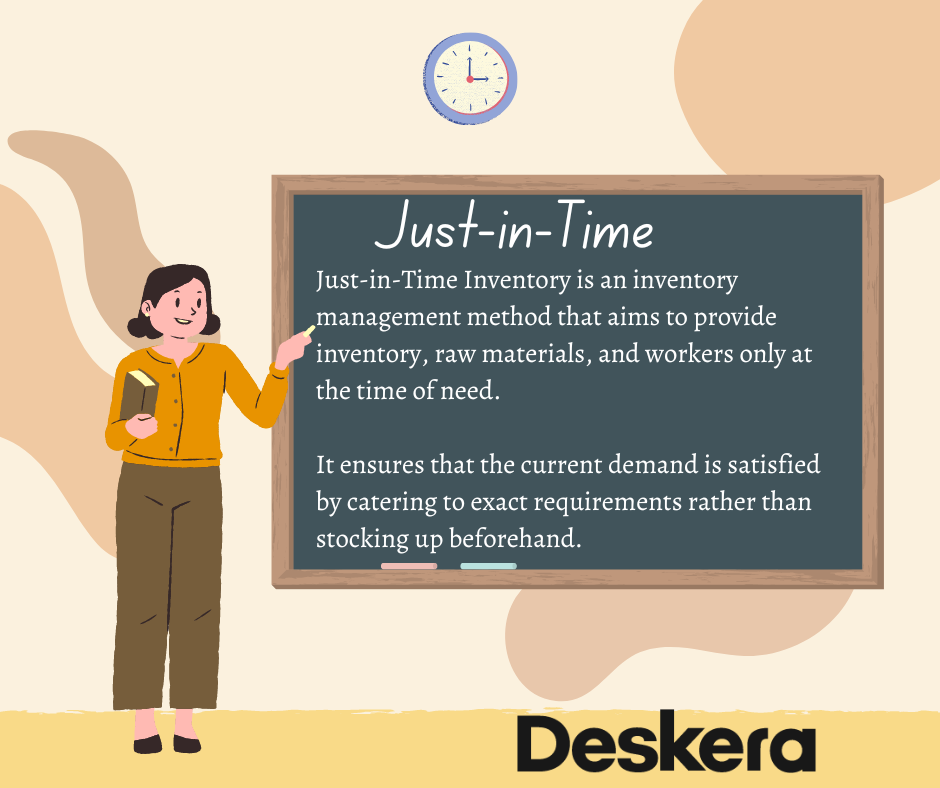
Note: According to Wikipedia, "continuous flow manufacturers. It includes food manufacturing, textile manufacturing, steel, and manual labor" are the reverse of job shops.
Let’s now discuss the characteristics of a job shop.
5 Characteristics of Job Shop Manufacturing
Following we’ve discussed four characteristics of job shop manufacturing. Let’s learn:
1. Layout
In the workshop, similar tools or jobs are organized together. For instance, a process plan would place all the drill presses in one area and all the grinding machines in another.
The goal of the plan is to lower expenses and improve material management and work-in-progress (WIP) inventories. Job shops use general purpose equipment rather than specialized, dedicated product-specific equipment.
In order to allow job shops the ability to swiftly switch setups on multiple machines, digital numerically controlled gear is widely used. Because economies of scale are often not a competitive advantage for job shops, businesses must compete on grounds other than pricing.
In terms of product quality, delivery efficiency, customization, and the introduction of new items, they compete.
2. Routing
When a job shop receives an order, the part being worked on is moved according to a set of protocols between the various regions. Not all of the machinery in the factory will be used for every task. Jobs may be processed many times at the same computer and frequently follow an unpredictable routing.
In addition, this design is used in places like department stores and hospitals, where certain areas are designated for a particular commodity (men's apparel) or service.
3. Employees
Highly competent craftspeople who can operate a number of machinery classes are frequently employed by workshops. These workers get paid more because they are more skilled. Because of their high degree of ability, job shop employees need less supervision.
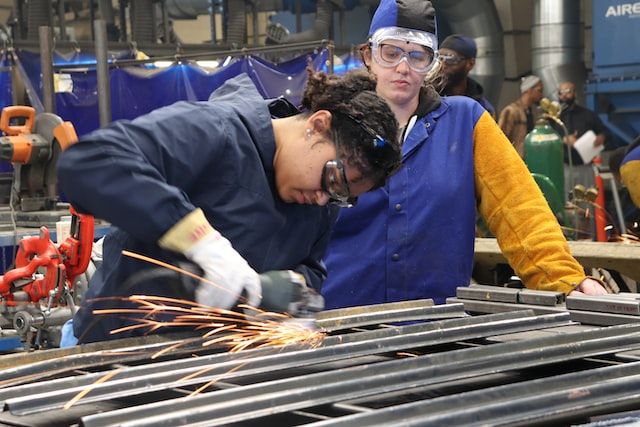
Employees may be paid via an incentive plan or a set hourly rate. Setting prices for customer orders and submitting bids for jobs are duties of management. Information processing is the primary activity in a job shop.
4. Information
Information is the most crucial element of a workshop. To specify the particular work to be done, estimate a cost, submit a job bid, and process an order through the shop, information is needed. Before the task is released to the floor, a quote is provided, followed by the preparation of a job sheet and blueprint.
Workers fill out job sheets and timecards once they are on the factory floor in order to update records for future project quotes when deviations are present and to determine labor expenses.
While it is typically easier to bid on jobs that the shop has already completed, new jobs demand appropriate overhead assignment as well as proper costing of labor, materials, and equipment.
Every job is monitored using a ticket that travels around the shop, noting time and activity. Because it produces one-of-a-kind, personalized things, the company competes on quality and customer service rather than price.
Due to customers bringing in the materials and components to be worked on, the job shop has minimal to no raw material stocks. While jobs are being completed, the job shop holds work-in-process inventory.
However, there is no finished goods inventory in this made-to-order setting because the client often expects prompt delivery and is awaiting the order.
Some shops, like many small businesses, do well with cash flow management. They might work on tiny jobs in order to complete them by the end of the month so they can bill clients for the service.
5. Scheduling
A job's route, processing requirements, and priority are what make it up. When deciding how and when to plan work, the diversity of things in a job shop is an important factor to take into account.
Depending on how a job arrives, it might not be completed to avoid costly machine setups and replacements. Tasks may also be scheduled according to their processing times, from shortest to longest.
It can be difficult to estimate capacity in a job shop because it depends on a variety of variables. It includes lot sizes, job complexity, mix of previously scheduled jobs, effective scheduling techniques, the number of machines and their condition, the quantity and quality of labor input, and any process improvements.
Important Features of Job Shop Manufacturing
Following we have discussed the characteristics of Job Shop Manufacturing. Let’s learn:
1. Customers frequently submit numerous small-batch orders (jobs) with unpredictable process requirements at unpredictable times.
2. A job's quantities, material requirements, routings, priorities, target lead times, and margin may all change.
3. An order may specify the manufacturing of a collection of related components or a variety of components, the development of subassemblies from those subassemblies, and the final assembly.
4. While competing for the same resources, many jobs may be operating simultaneously through the system along their own routings.
5. Processing a work might entail some external operations.
6. Production tasks might be carried out in a particular order or according to predetermined priority relations.
7. The operations and relations might vary from job to job.
8. The setup and cycle times of every operation can change based on the task.
9. How quickly operations are setup may also depend on the sequencing of the jobs.
10. A single resource or a large number of resources, such workers and machines, may be required for an operation.
11. Workers and multipurpose machines could be considered resources.
12. Resources may be subject to individual calendars (working hours) and calendar exclusions.
13. One or more alternative resources may or may not be shared in order to reduce the amount of time needed for a protracted operation.
14. The system allows for the transfer of materials for a project either as a single batch or in small transfer batches.
Industries that Employ Job Shop Manufacturing
A job shop may produce a wider range of goods than a production line. This can do so sequentially and one after the other. Job shops can be found in the following industries:
• Make-to-order (MTO) production units
• Engineer-to-order (ETO) production units
• Custom manufacturing units
• High-mix, low-volume production units
• Order-driven production units
• High-variety production units
Job shops, in particular, include many different types of companies, such as:
- Paint Shop
- Fabrication shops,
- Commercial Printing Shop
- Bespoke woodworking companies,
- Forge shops,
- Machine shops,
- Mold shops,
- Tool & die shops,
- Furniture makers,
- Labs,
- Repair companies,
- Particular service companies, etc.
Production management in job shops like fabrication units is typically akin to the management of multiple, concurrent projects that share a lot of common resources. However, they have a limited amount of capacity.
When is Job Shop Production Used?
The job shop production method is applied when:
- Large inventory of materials, tools, and components
- High variety of products with volume
- Planning is necessary for the priority of each order as well as the sequencing of each product capacity for each work center.
- Utilization of general-purpose equipment and facilities
- Highly skilled individuals that see each task as a challenge
Example of Job Shop Manufacturing
Many different manufacturers use job shop manufacturing, and in our example, we'll look at how it's used within our business.
Design
Customers can personalize products or design elements. Due to the special setup required, job shop manufacturing enables manufacturers to customize each individual item.
The customer can select the type of finish they want for their components or goods in addition to choosing from a variety of materials.
Customers can pick whether they want their components or products painted or even engraved in addition to the other choices available.
Preparing Materials through Cutting
Once the order is placed and the supplies have arrived, the sheet metal is cut to the specifications in compliance with the customer's order.
One of our knowledgeable operators will cut the material into the required form at the particular workstation we have set aside for that purpose. specifically, strips or discs made of metal. Therefore, workstations are ideal for avoiding backlogs and delays.
Rolling & Welding (Dependent on component)
If the sheet metal had been cut into strips, the ends would first be joined by welding after the strips had been rolled.
First Inspection and Tooling
The sheet metal discs or welded components are inspected in accordance with ISO 9001: 2015 standards, as is the case with all processes. The tooling is then selected based on the requirements of the customer order.
Metal Spinning
The metal spinning process begins once the materials have been prepped and cut. In this instance, welded metal discs or metal strips are formed over a tool. To the customer's specifications, the component is finished and shaped.
Finishing and Secondary Fabrications
The component will undergo a polishing process after its shape is finalized. The cleaning procedure includes the procedures of deburring and polishing. If more secondary fabrications are required, we'll drill holes before anodizing or painting, for example.
Final Assessment and Delivery
The items undergo one more inspection before being packaged and shipped.
When workstations are divided in this fashion, it is simple to move the components to the subsequent operation. The availability of personalization options would further suggest that the things are not in the same order.
Advantages of Job Shop Manufacturing
Job shop production is the best manufacturing process for any modern organization. Even the majority of firms can go back to its roots.
This is not to say that this process is perfect. Thus, let's discuss its shortcomings so that you are aware of them and can be ready for them.
Following we’ve discussed the benefits of job shop manufacturing. Let’s discuss:
1. Increased Flexibility
You can manufacture and produce a much wider variety of items. It is because the machines aren't made specifically to make one type of product.
2. Improved Supervision
In job shop production, the departments are in charge of organizing the machines into functional groups. Each department's manager has more extensive knowledge to ensure more productive days.
3. Operators Pick up Cutting-Edge Knowledge and Abilities
Almost every operator can concentrate on one machine and study this department. It is because machines are organized by department. This could boost each department's activity and manufacturing efficiency.
4. Highly Qualified Individuals
For this type of manufacturing process to be successful, you will need employees that are highly skilled in the particular trade of your company.
In other words, you can let workers finish their jobs since their level of experience will ensure that they deliver a high-quality finished product on time.
5. Better Equipment Utilization
When using the job shop method, every piece of equipment is used as fully as is practical. Large machines and expensive machinery are therefore not as necessary.
6. Product Monitoring on the Ground
The products move while going through their own stages, making it simple to watch their growth.
7. Lower Spending
Simply buy the appropriate tools, put them in the best locations for your items to move through throughout manufacturing, and you're good to go.
Simply make further orders to finish the merchandise and satisfy customer demand. Installation of a new workstation shouldn't disrupt the ongoing procedure.
8. Better Utilization of Resources
Focusing on each product will allow you to efficiently use all of your resources to complete orders.
9. Customizable Product Designs
The workshop production method allows customers to customize their orders. As a result, each product is unique, and the buyer can participate in the manufacturing process.
Disadvantages of Job Shop Manufacturing
There are always drawbacks to take into account with positives. The drawbacks of job shop manufacturing are listed below.
1. Heavy Production Costs
Manufacturing in a job shop is more expensive. It is because managing materials and moving parts from one department to another is so expensive.
2. Costly Material Management
In manufacturing, managing the materials can be expensive and challenging. Materials must be exchanged, which could be confusing, if one machine is not prepared to take on a task or the machine worker is not accessible.
3. High Flow of Materials
Because job shop manufacturing is carried out by departments, the pieces must be transferred to the subsequent department for completion. Due to the necessity of transferring components around the whole facility before an activity is finished, job shop manufacturing has a high material flow.
4. Longer Lead Times for Production
Each part of the batch must be completed before the item can move on to the next stage of production. If one component is running late, the entire batch will as well, resulting in a long lead time and low production rates.
5. High Degree of Work
Your workload could be heavy if you have a lot of orders. However, the opposite is equally undesirable. Low to no orders suggest insufficient utilization of the resources. However, there is a chance that both will be stressful.
The negative aspects of a job shop could be frightening. Although there is a possibility that you will encounter these issues, there are things you can take to avoid them.
Simplify Job Shop Production System
It makes sense to simplify the system in order to make it easier to control job shop output. It is preferable to try to simplify things as much as you can, despite any practical limitations.
Simplifying things might not always be free. The job shop production system can be streamlined using the following two methods.
I. Analysis of the process flow, identification of component families, design of cells for various part families, and cellular manufacturing
II. Sufficiently boost resource capacities
The first method can undoubtedly lessen the complexity previously described if resources can be distributed to different cells as needed. It can be highly beneficial for companies that produce parts.
However, this tactic might have some limitations in fabrication in project-oriented job shops. The administration of job shop production can be significantly simplified if resource capacities can be raised as needed.
Keeping a lot of unused resource capacity might increase the overall cost of production, making simplification through capacity improvement uneconomical for some small job shops. Some of the simplification methods used today fall short in this area.
For instance,
a) The lean manufacturing approach, which incorporates takt time, line balancing, VSM for each product, heijunka, and best practices, is insufficient for handling multiple, diverse activities at once.
b) The theory of constraints (TOC) recommends capacity planning as a single constraint with full subordination to simplify the system. But the vast majority of job shops reject it, probably because they do not think it is cost-effective.
The ability of the shop to produce in a variety of ways should not be sacrificed in the name of simplification of complex, high-variety manufacturing, despite how strongly desired this is.
Job Shop Vs. Chop Shop
It is important to distinguish this expression from "chop shop," which while sounding similar, has a very distinct connotation.
A company that disassembles vehicles, even stolen ones, is known as a chop shop. After that, it either sells them as components or puts the pieces together to make cars that are then sold. Many stolen cars are sold by them.
Vehicles are routinely exported and are prepared in chop shops.
How Deskera Can Assist You?
Deskera MRP allows you to closely monitor the manufacturing process. From the bill of materials to the production planning features, the solution helps you stay on top of your game and keep your company's competitive edge.

Deskera ERP and MRP system can help you:
- Manage production plans
- Maintain Bill of Materials
- Generate detailed reports
- Create a custom dashboard
Deskera ERP is a comprehensive system that allows you to maintain inventory, manage suppliers, and track supply chain activity in real-time, as well as streamline a variety of other corporate operations.
Deskera Books enables you to manage your accounts and finances more effectively. Maintain sound accounting practices by automating accounting operations such as billing, invoicing, and payment processing.
Deskera CRM is a strong solution that manages your sales and assists you in closing agreements quickly. It not only allows you to do critical duties such as lead generation via email, but it also provides you with a comprehensive view of your sales funnel.
Deskera People is a simple tool for taking control of your human resource management functions. The technology not only speeds up payroll processing but also allows you to manage all other activities such as overtime, benefits, bonuses, training programs, and much more. This is your chance to grow your business, increase earnings, and improve the efficiency of the entire production process.
Final Takeaways
We've arrived at the last section of this guide. Let's have a look at some of the most important points to remember:
- A Job Shop is referred to as a type of manufacturing process that can handle small orders for made-to-order (MTO). Here the products are produced in small batches (of varying quantities) to maximize flexibility.
- Job shop manufacturing processes are distinguished by specific workflows, work centers, job prioritization, and job-related information.
- In job shop production, the departments are in charge of organizing the machines into functional groups. Each department's manager has more extensive knowledge to ensure more productive days.
- Customers frequently submit numerous small-batch orders (jobs) with unpredictable process requirements at unpredictable times.
- In job shop production, the departments are in charge of organizing the machines into functional groups. Each department's manager has more extensive knowledge to ensure more productive days.
- The workshop production method allows customers to customize their orders. As a result, each product is unique, and the buyer can participate in the manufacturing process.
Related Articles
